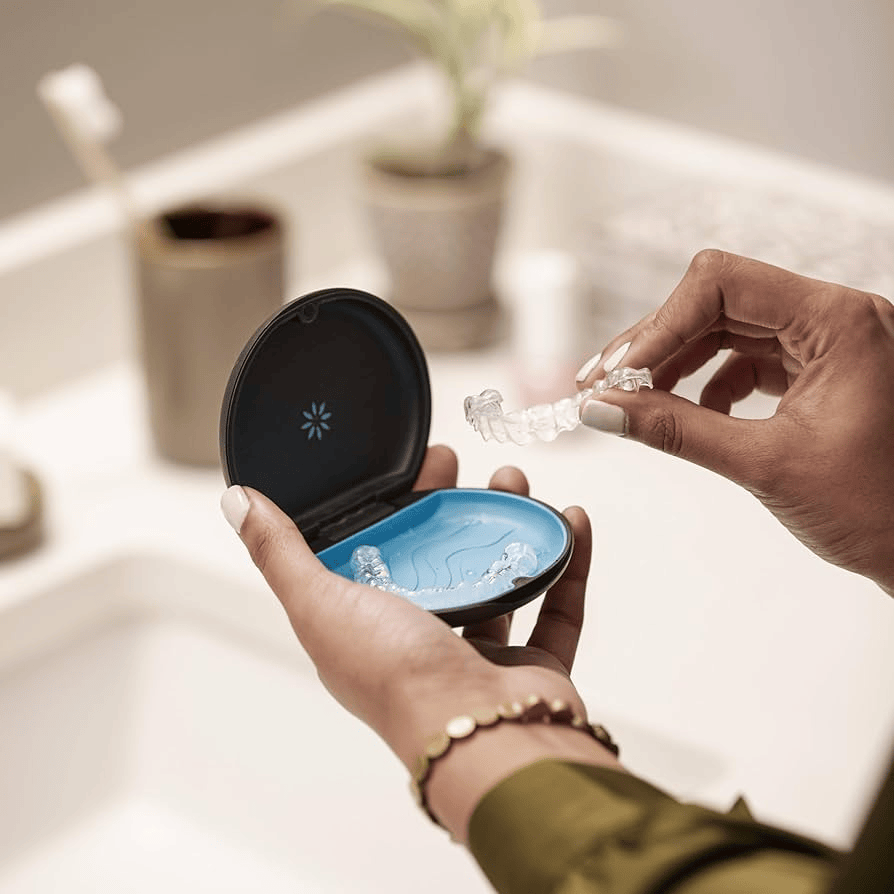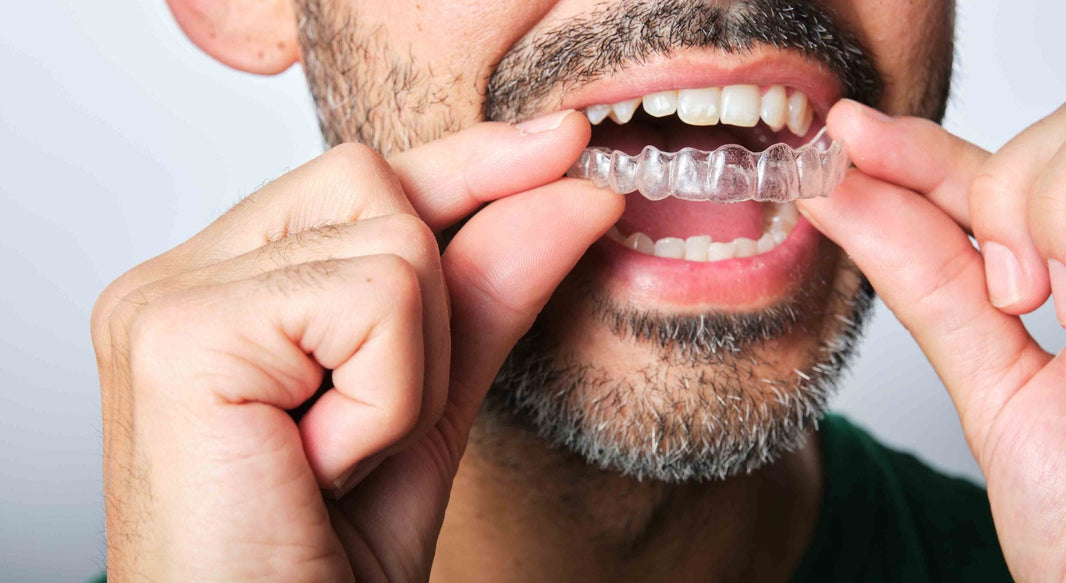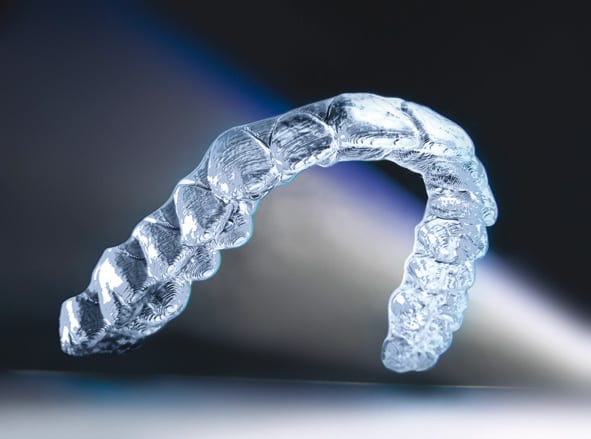After enduring months, or even years, of orthodontic treatment through braces or transparent aligners, the moment you achieve that straight, stunning smile feels like a significant victory. However, this milestone doesn't mark the end of your orthodontic journey. The next critical phase involves wearing a retainer to ensure your teeth remain perfectly aligned. But how long should you wear a retainer after orthodontic treatment? Let's delve deeper into the intricacies of retainer wear duration and its vital role in maintaining your radiant smile.
Table of contents
Understanding the Role of Retainers
Retainers play a crucial role in orthodontic treatment by stabilizing your teeth in their newly aligned positions. Without them, there's a high chance of experiencing relapse, where teeth gradually drift back to their original positions. This regression occurs because the tissues and bones surrounding your teeth require time to adapt and stabilize after the orthodontic pressure is removed.
The Science Behind Retainers
Retainers work by applying gentle pressure to your teeth, encouraging them to settle firmly into their new positions. This process involves the remodeling of the bone and the surrounding periodontal ligaments. Without this stabilization period, your teeth are more susceptible to shifting back due to the elastic nature of these supporting structures.

The Importance of Consistency
Consistency in retainer wear is paramount to ensuring long-term success. Just like regular exercise maintains physical fitness, consistent retainer use prevents orthodontic relapse. It's essential to follow your orthodontist's instructions and wear your retainer as prescribed to avoid undoing the hard work and time invested in your orthodontic treatment.

The Psychological Aspect
Wearing a retainer also has a psychological component. It serves as a constant reminder of the journey and effort you've put into achieving your perfect smile. By diligently wearing your retainer, you're not only preserving your physical results but also reinforcing a commitment to your oral health.

Types of Retainers
Retainers come in various forms, each with distinct advantages tailored to individual needs and preferences. Understanding these differences can help you make informed decisions about which type of retainer suits you best.
Removable Retainers
Removable retainers are highly popular due to their convenience and ease of use. They can be taken out for eating and cleaning, making them a favorite among patients.
Hawley Retainers: These are made from a combination of acrylic and metal wire. They are durable and offer adjustability, allowing minor tweaks if necessary. Although visible, they are known for their robustness.
Clear Retainers: Also known as Essix retainers, these are transparent and provide a more aesthetically pleasing option. They fit snugly over your teeth and are less noticeable, making them a popular choice for those concerned about appearance.
Permanent Retainers
Permanent retainers, or fixed retainers, consist of a wire bonded to the back of your teeth. They offer a long-term solution to maintaining alignment without the need for daily removal and reinsertion.
Advantages: Permanent retainers are discreet and require minimal maintenance, making them ideal for individuals who may struggle with consistency in wearing removable retainers.
Considerations: While they are convenient, they require meticulous oral hygiene practices to prevent plaque buildup and should be monitored regularly by an orthodontist.
Night Guards and Bite Guards
While primarily designed to prevent teeth grinding, night guards and bite guards can also function as retainers. They provide dual benefits for individuals who grind their teeth at night, offering protection and maintaining alignment simultaneously.

How Long Should You Wear a Retainer?
The duration for wearing a retainer varies based on individual circumstances. However, generally speaking, the longer you commit to wearing it, the better your long-term results will be.
Initial Phase: Full-Time Wear
In the initial phase post-orthodontic treatment, the recommendation is typically to wear your retainer full-time. This means keeping it in place throughout the day and night, removing it only for meals and oral hygiene routines.
Duration: This phase can last from three months to a year, depending on factors such as your specific orthodontic needs, the type of retainer, and your orthodontist's assessment.
Purpose: The goal during this period is to allow your teeth to stabilize in their new positions, giving the surrounding bone and tissues time to adapt to the changes.
Transition Phase: Gradual Reduction
After the initial stabilization period, you may transition to wearing your retainer less frequently. This phase often involves gradually reducing daytime wear while maintaining nighttime use.
Monitoring: Regular check-ups with your orthodontist are crucial during this phase to monitor any potential relapse and make necessary adjustments to your retainer wear schedule.
Adapting: This period allows your teeth to become accustomed to less frequent support, preparing them for long-term maintenance.
Long-Term Phase: Night-Time Wear
Once your orthodontist approves, you can switch to wearing your retainer solely at night. This phase is vital for maintaining alignment over the years.
Indefinite Wear: Night-time wear may last several years or even indefinitely, as teeth naturally shift with age. Consistent night-time wear helps counteract these changes.
Investment Protection: Long-term retainer use safeguards the investment you've made in your orthodontic treatment, ensuring your smile remains beautiful and healthy for a lifetime.
Factors Influencing Retainer Wear Duration
Several factors can influence how long you need to wear your retainer, each playing a significant role in determining the optimal wear schedule for your unique situation.
Age and Biological Factors
Younger patients often have more flexible tissues, which can be more prone to shifting. As a result, they may require longer retainer wear to ensure stabilization. Conversely, adults may experience different biological responses, influencing their retainer wear duration.
Type of Malocclusion
Certain types of misalignment, such as severe crowding or spacing issues, may have a higher tendency to relapse. These cases often necessitate extended retainer wear to maintain alignment and prevent regression.
Type of Orthodontic Treatment
The specific orthodontic treatment you underwent can also impact retainer wear duration. For example, those who used clear braces or invisible aligners might have different wear schedules compared to traditional braces users, based on the nature of their treatment.
Personal Habits and Lifestyle
Individual habits, such as teeth grinding or clenching, can influence retainer wear duration. Additionally, lifestyle factors like diet and oral hygiene practices play a role in determining how long you should wear your retainer.
Caring for Your Retainer
Proper care and maintenance of your retainer are essential to ensure its effectiveness and longevity. By taking proactive steps, you can protect your retainer and enjoy its benefits for years to come.
Cleaning Your Retainer
Keeping your retainer clean is crucial for maintaining oral hygiene and preventing bacteria buildup.

- Daily Cleaning: Just like brushing your teeth, cleaning your retainer daily is vital. Use a toothbrush and mild soap or non-abrasive toothpaste to gently scrub your retainer, removing food particles and plaque.
- Soaking: Regularly soak your retainer in a cleaning solution designed for dental appliances. This helps eliminate bacteria and keeps your retainer fresh and odor-free.
Protecting Your Retainer
To ensure your retainer remains in good condition, it's important to protect it from damage and loss.

Avoid Heat: Do not expose your retainer to high temperatures, such as hot water or direct sunlight, as this can warp the material and compromise its fit.
Proper Storage: When not in use, store your retainer in its protective case to avoid damage or loss. This simple habit can prevent costly replacements and ensure your retainer remains effective.
Regular Check-Ups
Routine visits to your orthodontist are essential to ensure that your retainer is functioning correctly and that your teeth remain aligned.

Monitoring: Your orthodontist can monitor your progress and make necessary adjustments to your retainer or recommend a new one if needed.
Professional Cleaning: Periodic professional cleanings can help maintain your retainer's condition, ensuring it continues to serve its purpose effectively.
When can I stop wearing my retainer after braces?
After your braces come off, you’ll likely need to wear your retainer around the clock for a few months before easing into nighttime wear. For many people, nighttime use continues for several years—or even permanently—to prevent shifting. Since every case is different, always follow your orthodontist’s advice on when, or if, you can stop wearing it altogether.
How long after braces do you need a permanent retainer?
While braces are typically worn for one to two years, a permanent retainer may be bonded behind the teeth for much longer—often five to ten years, and sometimes even decades. In fact, some individuals wear the same fixed retainer for 20 years or more without issue, as long as it remains intact and properly maintained.
Is wearing a retainer for 2 years enough?
Two years of retainer wear is important, but it’s usually not the finish line. Orthodontists often recommend wearing retainers nightly for life to safeguard the results of your treatment. Teeth can shift subtly over time, so continuing to wear your retainer long-term offers the best chance of keeping your smile aligned.
How quickly will teeth move without a retainer?
Your teeth can begin shifting surprisingly fast if you stop wearing your retainer—sometimes within just a few days. Minor changes might become noticeable within a week, especially if your alignment was complex or recent. Over time, the longer you go without a retainer, the greater the risk of significant movement.
Conclusion
Wearing a retainer after orthodontic treatment is a crucial step in maintaining the results you've worked hard to achieve. While the duration may vary based on individual needs, committing to the prescribed retainer wear schedule will help you enjoy a straight, healthy smile for a lifetime. Remember to follow your orthodontist's instructions and take good care of your retainer for the best results. With discipline and care, you can keep your smile bright and aligned for years to come.






